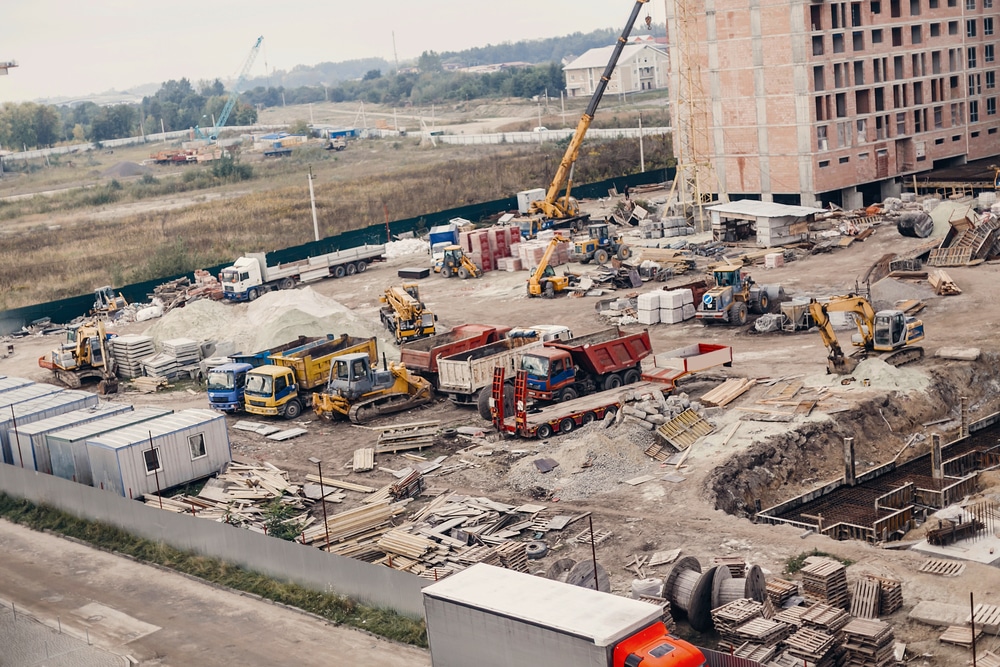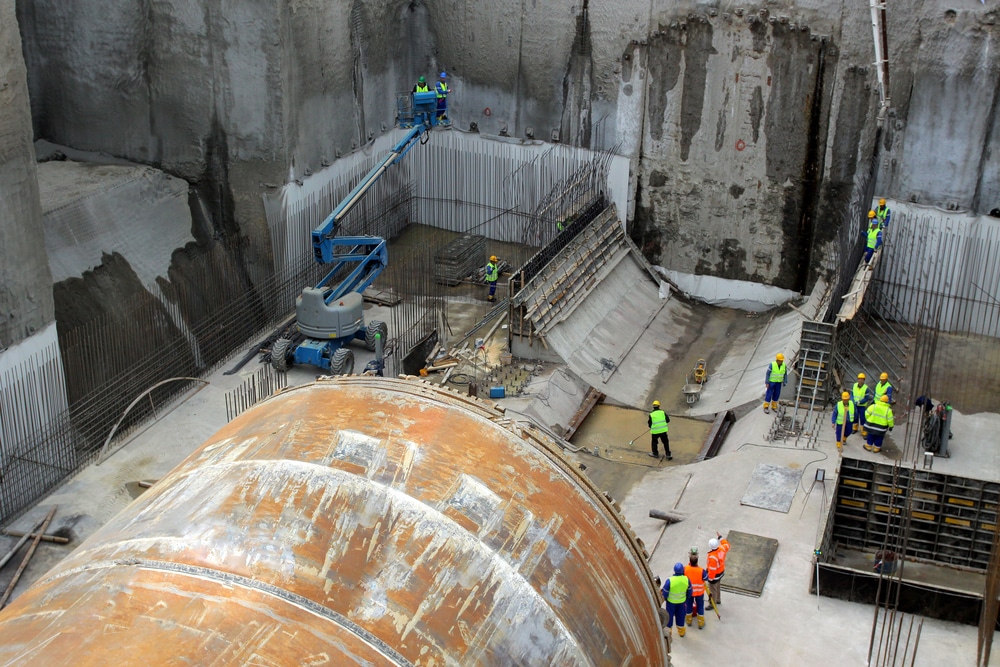Kickstarting the digital journey of your business is never easy. Heavy resource management, bold initiatives and continuous effort are required in order to convince everyone in your organisation to go digital.
Both field teams and people in the office can sometimes be resistant to change as a result of their unwillingness to alter the way they work on a day to day basis or due to the lack of trust on the newly-implemented tools.
This is where your mission as a construction software champion begins. It is vital to understand what slows digital adoption down for your organisation and act accordingly.
Of course, this is not a one-day project. As highlighted by McKinsey and Company, there is a continuously growing gap between industry leaders and laggards in terms of adopting advanced analytics. In the long run, this steadily increasing distance will lead many companies out of the market.

The good news is that it’s not too late for your company to embrace a data-driven working approach, regain control over the project workflow and enjoy the benefits of increased productivity, fewer delays and lower rework rates.
Regardless of how far you are on your digital adoption journey, we present below ten powerful tips to get your field teams to use construction software:
1. Focus on standardisation first
The standardisation of your systems and processes should always be seen as the number one priority. Even before selecting a digital solution for your project, it is of paramount importance that your teams on site are well-trained and ready to do their part of the job at the right time and in accordance with the set standards and specifications.
The better you define your workflow the easier will be both for you and your field teams to understand the value of the new tool and use it properly. In any other case, introducing construction software to the people on site might add even more confusion to their work.
Furthermore, a standardised process is a process that can be replicated. You can always improve it based on the feedback provided by the people on the field and improve it for future projects.
2. Develop your digital culture
Once your project has been streamlined and the different stages have been defined in detail, it is time to work on your digital culture.
The first step that you need to take in that direction is to explain to your field teams the value of the newly-implemented digital tools and show them how construction software will help them work smarter and faster if used in the right way.
Expect always to face some skepticism, at this point, as it might be hard for some members of your field teams to see the long-term value of implementing construction software in your project.
For that reason, you should be prepared to show them what’s in for them from a personal standpoint. For instance, the successful implementation of a digital solution might mean less time spent on site and more time at home. This could motivate many people to adopt a new way of work and save both time and effort.
3. Start small, learn fast
When working on the rollout of a digital solution, start small. Attempting to implement a digital tool across the whole company at once will most probably end up badly. Kick off this future life-long digital relationship with baby-steps, and with the “Think Big, Start Small, Learn Fast” mantra alongside you.
In that way, you give to all the members of your team the time to get familiar with the new digital solution while minimising the risk of any costly mistakes.
As soon as the initial rollout is completed, you need to go back and analyse the entire process to see what could be done better next time. Based on the findings, you can adjust the second stage of your roll out and proceed with it more effectively.

4. Get the fundamentals right
Our next tip comes as a natural continuation of our previous piece of advice. Before you start exploring the more advanced features and functions of your new software, it is an excellent idea to get the fundamentals right.
This gradual exploration of the platform will give your teams on site the necessary time to feel comfortable using the software and see the value that it brings to the project.
On top of that, by avoiding to put too much pressure on them at an early stage you provide them with the opportunity to test the tool on their own and get more connected to it.
5. Encourage group engagement
At the moment, there are many different types of construction software in the market. Regardless of the type of solutions, you have chosen for your team, one thing is sure. The software you are using should be able to interact.
This will allow your field teams to exchange documents, project updates and assign tasks in real time. Such an element won’t only bridge the gap between the boardroom and the field but it will motivate your people on site to engage more with the software and use more of its features.
6. See training as a priority
Training is a vital part of onboarding and it goes without saying that it should be one of the most influential parameters for your construction software selection process.
Before you make your final choice, you should discuss this with your software provider and request from them a detailed plan of action concerning the training of your teams (both on the field and the office). This would be a strong indication regarding the quality of customer support that you are about to get in the future.
Read also: Construction daily logs 101 – What you need to know
Back to the training, if done right it can really accelerate the adoption of the new digital solution by your field teams. Ideally, each team should receive a personalised demonstration of the tool according to their role in the project. It is essential that most of the training happens on site so both sides get a good grasp of how the tool will be used on a day to day basis.
Lastly, it’s important there is a fixed point of contact for the teams on site when they face a problem with their software. This would give more confidence to the people on site to experiment with the software and ask as many questions as possible so they can get the best out of the new tool they have in their hands.
7. Outline the key tasks and duties across every team
Being able to narrow down the key tasks and responsibilities for each field team and its members could work miracles. The adoption of a new digital tool is already an event that can bring confusion to your colleagues.
To avoid any more chaos on the site, you need to offer your team solid guidance with regards to how you expect them to use the software and in what frequency. By doing that, the personnel on the field will feel way more comfortable with their new working routine and will witness the value of this digital shift much faster.
As a result, the digital journey of your organisation will develop faster and with significantly better results.
8. Check with your field teams on a regular basis
By now all your systems should be up and running but it’s important that you stay in close contact with your field teams in order to ensure that everyone is using the new software solution without any problems.
There are many ways you could achieve that. For instance, you could set a bi-weekly meeting with the people on site and a customer support representative from your software provider. During the meeting, you would have the opportunity to discuss any problems that your teams might face while working on the app.
Ideally, your project will be assigned to a specific customer support representative who knows and your team, so things move faster and there is more trust between the two sides.
This bi-weekly meeting could then be coupled with an internal meeting where everybody would offer their feedback on how the use of the tool could be improved.
Except for setting up meetings, it is crucial that you constantly examine the level of digital engagement of your team. Are they using the app as much as they should and according to their key responsibilities and tasks? If not, why is that? This analysis of the on-site data can get you a long way, as we will see on the next point.

9. Continuously analyse your data
Data is your most valuable ally in this long -and sometimes painful- process. It’s the objective source of truth which can offer you an accurate overview of how well the new construction software has been implemented in your organisation and used by the teams on the field.
There are many different benchmarks you can use in order to achieve that. More specifically, you can start by measuring the level of engagement of your employees and then analyse its impact on site in terms of productivity, quality of communication and rework rates.
In an ideal scenario, the implementation of the new software should lead to fewer delays, lower cost and generally better on-site performance.
Adopting this fact-based approach will also be very helpful in identifying quickly the areas that require more attention and preventing your project from turning to a “digital Babel”.
10. Repeat on future projects
We have already referred to the importance of standardising all systems and processes of your project in a way that they could be replicated again in the future. It doesn’t take much to understand why this could be a game-changer for your company moving forward.
The more times you repeat this process the better results you will have. On top of that, as you move from project to project more and more members of your team on the field will have experienced this process and will have a considerably easier time in adjusting to the implementation of new tools.
In that sense, this is a “learning by design and repetition” journey where both you and your coworkers on the site will be consistently becoming more digitally mature.
Final word
Implementing a new digital solution to your project in construction is no child’s play. It can bring a lot of confusion both to the people on site and the boardroom. In LetsBuild we understand how important is to build a strong foundation for your digital transformation at an early stage.
If you want to read more on how we have helped construction companies from all over the world to embark on their digital journey, make sure that you take a look at some of our most successful onboarding stories.
But now, back to you! What are your main challenges in implementing digital solutions to your project? Do you have any tips on how you can get your field teams to use construction software?



